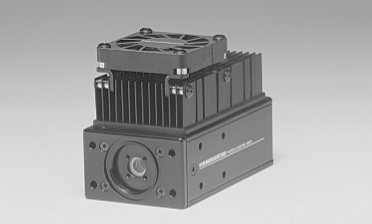PMTs for 2-photon imaging

On the topic of custom two-photon imaging rigs, what kind of PMTs do you want to go with? Naturally, you’ll order yours to be hand selected for high quantum efficiency and low noise, because you’re such an aficionado, but will you go for the still popular R3896s (pdf) from Hamamatsu, the miniature R6357s (pdf), or the GaAsP H7422s (pdf)?
Increasingly the answer is the latter. It’s hard to compete with GaAsP PMTs. However, the stock versions do have some annoyances: they switch off during transiently high signals and have to be manually reset, they have bulky cooling systems with noisy fans, and the detector is set back into the body so the field of view is quite narrow. Hamamatsu has heard all of this before and has a number of different variants you can order, but this is not widely known. Here is a summary sheet of all the 7422 variations available (pdf, includes models H10770, H10769, H10771 and H8224). Here are the spec sheets for the uncooled, very wide field of view versions (pdf, pdf).

The dark count is what skyrockets when you lose the cooling. From 100 or less per second cooled, to 6000 or more uncooled. Of course, even if your dwell time is a relatively long 10us per pixel, this comes out to one extra count every 17 pixels, which isn’t going to kill you in many applications, particularly those with bright fluorescence. Many people run the MOM scope (aka Denkscope) with no cooling on the H7422 PMTs, and they’re just fine.
[…] PMTs have made their way into fluorescence microscopy and are competing with GaAsP PMTs. (Well, actually, Hamamatsu makes both types, so it’s not really competition in that sense.) […]
[…] actual signal that comes off of a PMT in response to a photon is a pulse of current. The amplitude of this pulse can vary wildly, and the […]